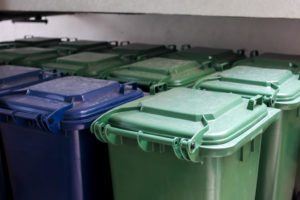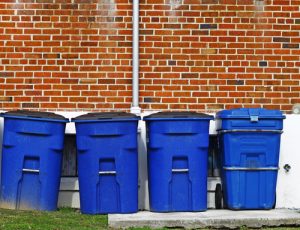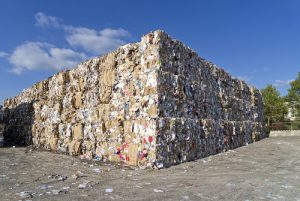 By tweaking existing equipment, materials recovery facilities could reduce the amount of flexible film packaging landing in their fiber bales, an industry study concluded.
By tweaking existing equipment, materials recovery facilities could reduce the amount of flexible film packaging landing in their fiber bales, an industry study concluded.

 By tweaking existing equipment, materials recovery facilities could reduce the amount of flexible film packaging landing in their fiber bales, an industry study concluded.
By tweaking existing equipment, materials recovery facilities could reduce the amount of flexible film packaging landing in their fiber bales, an industry study concluded.
 A rebound in commodity values meant substantial recycling-related revenue boosts for North America’s two largest residential haulers.
A rebound in commodity values meant substantial recycling-related revenue boosts for North America’s two largest residential haulers.
 No joke: On April 1, a U.S. state and a Canadian province will implement some big changes to their beverage container deposit programs.
No joke: On April 1, a U.S. state and a Canadian province will implement some big changes to their beverage container deposit programs.
 A paper-products maker shifts from newsprint to recycled lightweight linerboard at a Quebec mill, and a hauler serving multi-family housing is caught dumping recyclable materials into the garbage.
A paper-products maker shifts from newsprint to recycled lightweight linerboard at a Quebec mill, and a hauler serving multi-family housing is caught dumping recyclable materials into the garbage.
 “It’s been a resounding success,” said Robert Costanzo, engineering and operations manager for Surrey, British Columbia.
“It’s been a resounding success,” said Robert Costanzo, engineering and operations manager for Surrey, British Columbia.
 Vermont’s law mandating that producers fund the takeback and recycling of single-use batteries has helped significantly boost battery collections in the state. Meanwhile, collections are trending upward across the U.S. and Canada, according to Call2Recycle.
Vermont’s law mandating that producers fund the takeback and recycling of single-use batteries has helped significantly boost battery collections in the state. Meanwhile, collections are trending upward across the U.S. and Canada, according to Call2Recycle.
 Any time a government forces residents to change their behaviors, there’s the possibility of a strong pushback. But a recent webinar explored ways municipal officials can draft and implement mandatory recycling ordinances without drawing substantial resistance.
Any time a government forces residents to change their behaviors, there’s the possibility of a strong pushback. But a recent webinar explored ways municipal officials can draft and implement mandatory recycling ordinances without drawing substantial resistance.
 For North America’s largest haulers, recycling pleasure has given way to pain. After enjoying big returns from higher commodity prices in the first quarter, three recycling giants noted tumbling fiber prices in April.
For North America’s largest haulers, recycling pleasure has given way to pain. After enjoying big returns from higher commodity prices in the first quarter, three recycling giants noted tumbling fiber prices in April.
 A research firm is asking industry professionals to provide information for a broad analysis of the state of U.S. materials recovery.
A research firm is asking industry professionals to provide information for a broad analysis of the state of U.S. materials recovery.
An equipment upgrade at a Sherbrooke, Quebec materials recovery facility boosted the facility’s capacity from 14 tons per hour to 18 tons per hour and resulted in improved bale quality.
